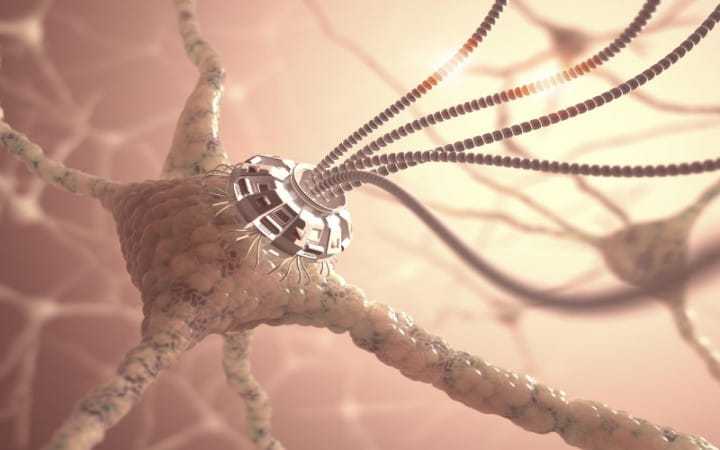Nanotechnology is a groundbreaking field that focuses on manipulating matter at the molecular level, typically at scales smaller than 1 micrometer, usually between 1 to 100 nanometers.
This science and technology are reshaping various industries by enabling the creation of devices and materials with remarkable properties and functions. Let’s explore six key areas where it is making a significant impact on our daily lives.
Nanotechnology Transforming Everyday Life with Revolutionary Applications

1. Materials and Coatings
When we think of it, advancements in materials and protective coatings often come to mind. it is revolutionizing everything from textiles and sports equipment to eyeglasses, computer screens, and camera displays. According to the U.S. National Nanotechnology Initiative (NNI), applying it has enhanced material properties such as strength, flexibility, durability, reactivity, and conductivity.
It is also improving the performance of coatings, making them more durable and resistant to wear and tear. For example, companies like Nano One Materials Corp in Canada are using it to develop advanced materials for lithium-ion batteries. In the U.S., Nanophase Technologies Corporation and Lightwave Logic, Inc. specialize in creating nanotech-based materials with superior properties.
2. Pharmaceuticals
Nanotechnology is making waves in the life sciences, particularly in medical technology, diagnostics, and drug delivery systems. For instance, Medlab Clinical in Australia has developed Nano Celle, a drug delivery platform that converts medications into nanoparticulate forms, allowing for smaller doses and more effective treatments. This technology is currently undergoing clinical trials for cholesterol-lowering drugs and insulin for type 2 diabetes.
It is also being used to develop antiviral drugs and RNA interference (RNAi) therapeutics. Companies like NanoViricides, Inc. in the U.S. are working on nanotech-based antiviral drugs targeting diseases like influenza, HIV, and herpes. Arrowhead Research Corp is developing RNAi therapeutics to treat various conditions using innovative it.
3. Food
In the food industry, nanotechnology is poised to play a significant role in enhancing food quality, safety, and preservation. Beyond genetically modified organisms (GMOs), it is being explored to improve the texture and flavor of foods. Additionally, it-based packaging can extend the shelf life of foods and protect them from harmful bacteria.
For example, titanium dioxide nanoparticles are commonly used in food products like the white coating on powdered sugar doughnuts. However, research has raised concerns about the potential effects of nanoparticles on health, such as reducing nutrient absorption in the intestines. While nanoparticles will likely remain in the food industry, ongoing research may lead to changes in how they are used in the future.
4. Electronics
Nanotechnology is at the heart of technological advancements, particularly in electronics. As predicted by Moore’s Law, the integration density of transistors doubles approximately every two years, leading to smaller and more powerful circuits. it is the driving force behind these advancements.
In 2015, IBM announced the development of a computer chip using 7-nanometer transistors. Just two years later, they achieved a 5-nanometer chip, integrating 30 billion transistors on a chip the size of a fingernail. This breakthrough demonstrates how it is pushing the boundaries of what’s possible in electronics.
5. Energy
Nanotechnology is also making significant contributions to the energy sector, particularly in energy storage and the recovery of oil and natural gas. For example, PyroGenesis Canada utilizes plasma-based nanotech tools to help companies in the oil and gas industry improve the efficiency and environmental impact of their operations. PyroGenesis Canada’s plasma process is even used by the U.S. Department of Defense and the additive manufacturing and 3D printing industries.
In renewable energy, it is enhancing the performance of solar cells. Natcore Technology Inc. has developed a black silicon solar cell and an all-back contact silicon heterojunction solar cell structure. This innovation reduces the cost of solar power generation by eliminating the need for expensive silver in solar cells.
6. Water and Air Treatment
Nanotechnology is playing a crucial role in environmental and sanitation applications, particularly in water and air purification. Researchers in the U.S. have developed a “book water purifier” using paper coated with silver nanoparticles to filter wastewater. This simple yet effective technology can produce up to 100 liters of drinking water per filter.
it is also being used to improve air quality. Researchers at the Massachusetts Institute of Technology (MIT) have discovered new uses for silk and its nanofibrils in air filtration systems. Meanwhile, global engineering company ABB is utilizing it to create air filters that efficiently block dust and other airborne particles.
Conclusion

Nanotechnology is a transformative force across various industries, from materials and pharmaceuticals to food, electronics, energy, and environmental protection.
By manipulating matter at the molecular level, it offers innovative solutions that enhance everyday life, making processes more efficient, products more durable, and our world more sustainable. As research and development in this field continue, we can expect even more exciting advancements that will further integrate it into our daily lives.
Check More
- What Is Digital Trust Technology
- Top 6 New Technology Trends for 2024
- Exploring the Future of Cutting Edge Technology
- What Is Blockchain Technology?

